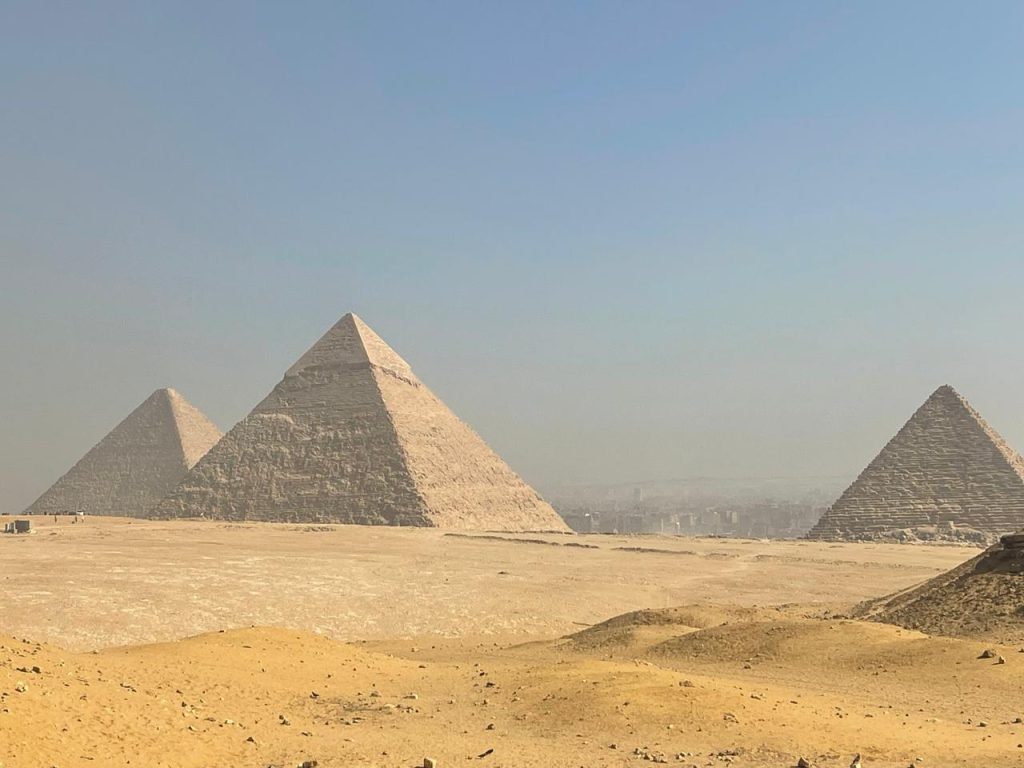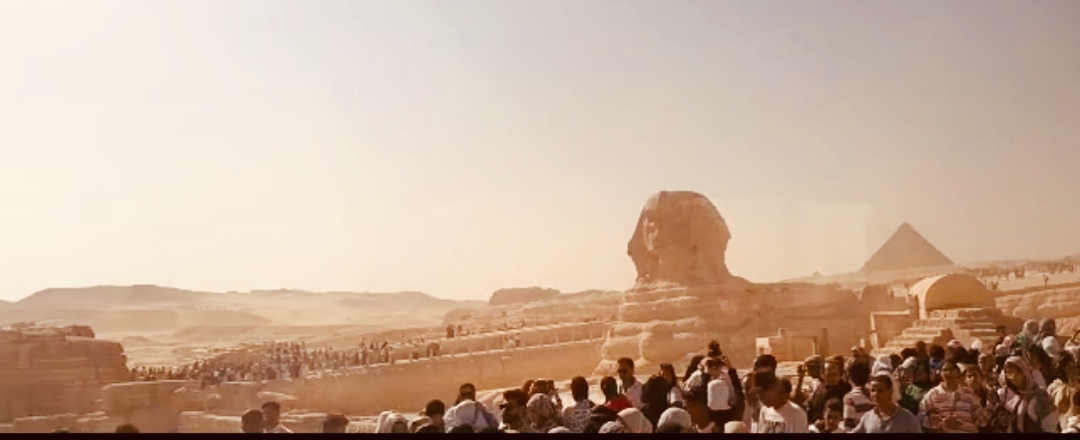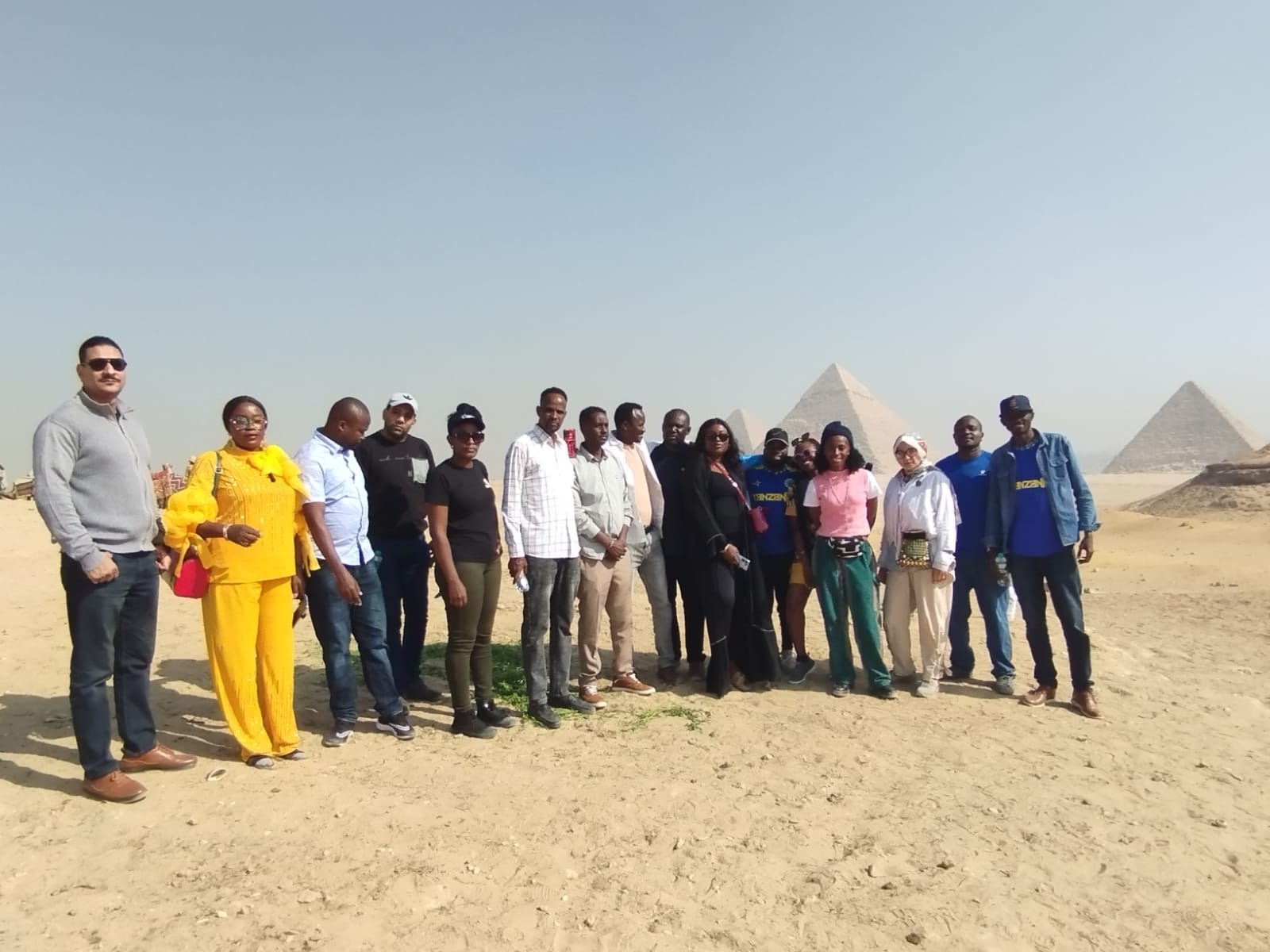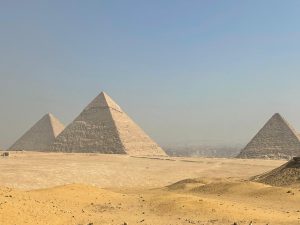Thousands Gather at Giza to Witness Egypt’s Iconic Pyramids
2 min read
Thousands Gather at Giza to Witness Egypt’s Iconic Pyramids
Written by Adesuwa Louisa / Jevvah Kiplimo Martin
Tourists from around the globe flocked to Giza, Egypt, to marvel at the stunning beauty of the ancient Egyptian pyramids, a UNESCO World Heritage site that continues to captivate visitors with its historical significance.
As part of the 12th edition of the Specialized Training for Anglophone Broadcasters, participants visited the Giza Pyramid Complex.
This excursion was organized as part of a highlight of the two-week training program hosted by the Supreme Council for Media Regulation, Training, and Media Studies. The visit provided media professionals with an opportunity to explore the splendor and rich history of this world-renowned landmark.

The Great Pyramid of Khufu, located on the Giza Plateau on the outskirts of Cairo, is a testament to ancient Egyptian ingenuity. This iconic site, strategically positioned on the western side of the Nile River, is home to not only the Great Pyramid but also the pyramids of Khafre and Menkaure, as well as the enigmatic Great Sphinx. Together, these monuments form a cultural and historical complex that attracts millions of visitors annually.
The Giza Pyramid Complex stands as a beacon of ancient architectural achievement and historical intrigue. From the towering Great Pyramid of Khufu to the majestic Sphinx, the site embodies the artistic and engineering brilliance of the Old Kingdom.

According to Mr. Osama Hassan , an experienced Egyptian tour guide, “The Great Pyramid was built as a tomb for Pharaoh Khufu (also known as Cheops) during the Fourth Dynasty, around 2580–2560 BC. This location was carefully chosen to align with important celestial and geographical markers.”
South of the Great Pyramid lies Khafre’s valley temple and the Great Sphinx, whose origin and purpose continue to fascinate scholars and tourists alike. “The Pyramid of Khufu is the first and largest of the three pyramids constructed during the Old Kingdom (2686–2181 BC) and was known to the Greeks as the Pyramid of Cheops,” Mr. Mohammed added.

Prominent historians have documented the magnificence of the Great Pyramid. The ancient Greek historian Herodotus wrote detailed accounts in the 5th century BC, while Diodorus Siculus, who visited Egypt between 60 and 56 BC, described the customs, land, and monuments, including the pyramid. Additionally, the Greek geographer Strabo visited Egypt in 25 BC and noted the pyramids as royal tombs.
Millions of tourists converge at Giza each year to witness the incredible feats of engineering and artistry that define the pyramids. These monuments are more than historical relics; they are portals to an era of unmatched cultural and architectural brilliance.

Every visit to the Giza Plateau offers a journey through time, allowing visitors to experience the majesty and mystery of Egypt’s most iconic monuments. Whether gazing up at the towering pyramids or standing before the Sphinx, the experience leaves an indelible impression.
Explore the captivating Egypt Pyramids tours and immerse yourself in the rich history of this ancient civilization a journey that promises awe and inspiration at every step.







